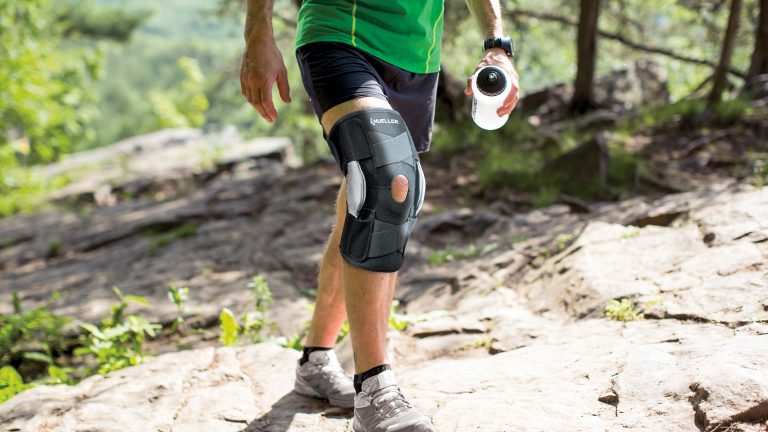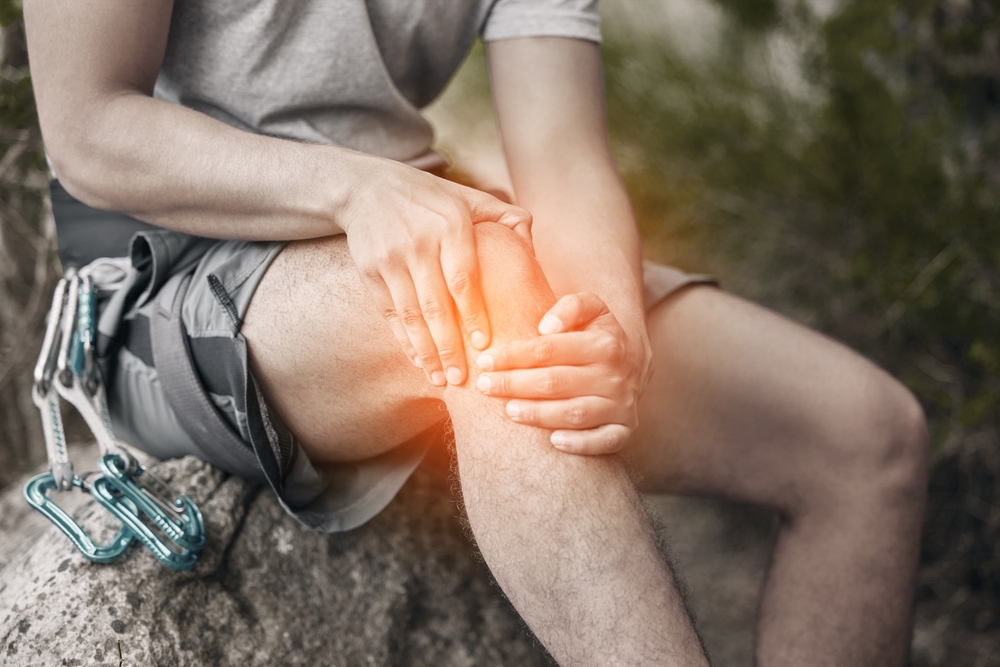Embarking on an Appalachian Trail (AT) through-hike is an exhilarating challenge, but it can take a serious toll on your knees. The trail’s rugged terrain, steep descents, and long mileage can cause knee pain, threatening to derail your journey. However, with the right strategies, you can minimize discomfort and keep pushing forward.
Here’s how to combat knee pain on an Appalachian Trail through-hike.
Strengthen Your Legs Before You Hike

Preparation is key. Strengthening your leg muscles—especially your quadriceps, hamstrings, and calves—helps support your knees and absorb the impact of long hikes.
Best Pre-Hike Exercises:
- Squats & Lunges: Build leg and glute strength for stability.
- Step-Ups: Mimic hiking motions to improve endurance.
- Calf Raises: Strengthen lower leg muscles to reduce strain on the knees.
- Balance Exercises: Help prevent missteps that could lead to knee injuries.
Use Trekking Poles for Support
Trekking poles are a hiker’s best friend, especially when dealing with knee pain. They reduce the impact on your joints and provide stability on rocky and uneven terrain.
Benefits of Trekking Poles:
- Reduce knee strain by up to 25%
- Improve balance on steep descents
- Distribute weight more evenly across your body
Wear the Right Footwear
The right hiking shoes and insoles can make a world of difference. Choose lightweight, well-cushioned hiking boots or trail runners that provide proper arch support and stability.
Footwear Tips:
- Go for a proper fit – Shoes should be snug but not tight.
- Choose cushioned insoles – Help absorb shock on descents.
- Break in your shoes – Avoid blisters and discomfort on the trail.
Manage Your Pack Weight
Carrying a heavy backpack puts extra pressure on your knees. Keeping your pack as light as possible can significantly reduce knee pain.
Weight Reduction Tips:
- Stick to ultralight gear whenever possible.
- Carry only essential items.
- Regularly evaluate and remove unnecessary items.
Use Knee Braces or Compression Sleeves

Knee braces or compression sleeves provide extra support, improve circulation, and reduce inflammation.
When to Use Them:
- If you’ve had previous knee injuries.
- When descending steep trails.
- If you feel persistent knee pain.
Pace Yourself and Take Breaks
Overexertion leads to fatigue, which increases the risk of knee pain and injury. Hike at a steady, comfortable pace and take regular breaks.
Smart Hiking Strategies:
- Start slow and gradually increase mileage.
- Take shorter steps on descents to reduce knee strain.
- Rest & stretch periodically to keep muscles loose.
Stretch & Perform Recovery Exercises
Stretching before, during, and after a hike keeps your muscles flexible and reduces tension on your knees.
Best Stretches for Hikers:
- Quad Stretch: Loosens thigh muscles that support the knees.
- Hamstring Stretch: Reduces tightness behind the knee.
- IT Band Stretch: Helps prevent lateral knee pain.
- Ankle Rolls: Improves mobility and reduces strain on the knees.
Stay Hydrated & Maintain Nutrition
Dehydration and poor nutrition can lead to muscle cramps and joint stiffness, increasing knee pain.
Nutrition & Hydration Tips:
- Drink plenty of water throughout the day.
- Eat anti-inflammatory foods like nuts, fish, and leafy greens.
- Consume protein-rich meals to support muscle recovery.
Listen to Your Body
Pushing through pain can lead to serious injuries. If you experience persistent knee pain, take a break or adjust your hiking plan.
Signs You Should Rest:
- Sharp or persistent knee pain.
- Swelling or inflammation around the knee.
- Difficulty bearing weight on your leg.
FAQ’s
1. How can I prevent knee pain before starting my hike?
Strengthen your leg muscles with exercises like squats, lunges, step-ups, and calf raises to improve stability and absorb impact.
2. Are trekking poles helpful for knee pain on the Appalachian Trail?
Yes, trekking poles reduce knee strain by up to 25%, improve balance on steep descents, and help distribute weight more evenly.
3. What type of footwear is best for reducing knee pain?
Choose lightweight, well-cushioned hiking boots or trail runners with proper arch support and shock-absorbing insoles.
4. How can I reduce the strain of carrying a heavy backpack?
Use ultralight gear, pack only essentials, and regularly evaluate your pack to remove unnecessary weight.
5. Should I wear a knee brace or compression sleeve?
Yes, knee braces and compression sleeves provide support, improve circulation, and reduce inflammation, especially on steep descents.
6. What hiking techniques help prevent knee pain?
Hike at a steady pace, take shorter steps on descents, and take regular breaks to rest and stretch your muscles.
7. Why is stretching important for knee pain prevention?
Stretching keeps muscles flexible and reduces knee tension. Focus on quad, hamstring, IT band, and ankle stretches.
8. How does hydration and nutrition impact knee pain?
Staying hydrated and eating anti-inflammatory, protein-rich foods help prevent muscle cramps and joint stiffness.
Conclusion
Knee pain is a common challenge on an Appalachian Trail through-hike, but with proper preparation, gear, and hiking techniques, you can minimize discomfort and enjoy your journey. Strengthen your legs, use trekking poles, wear supportive footwear, and listen to your body to keep your knees healthy and strong. By taking these proactive steps, you’ll improve your chances of completing the Appalachian Trail pain-free and injury-free. Happy hiking!






